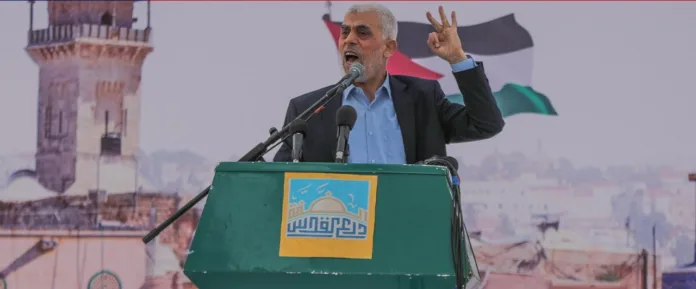Sinwar’s promotion marks a shift in Hamas leadership, reinforcing the Gaza-based faction’s control following the October 7 attack on Israel
Yehiya Sinwar, the formidable leader of Hamas in the Gaza Strip, has officially been named the new head of the militant group’s political bureau, succeeding Ismail Haniyeh. This announcement, made on August 6, 2024, solidifies Sinwar’s position as the supreme leader of Hamas and highlights the consolidation of power by the Gaza-based faction of the movement.
Sinwar, aged 61, is known for his hard-line stance and extensive history with Hamas. His career includes over two decades spent in Israeli prisons, where he was held for his militant activities. Following his release, Sinwar became a prominent figure within Hamas, especially noted for his strategic role in the October 7 attack on Israel. This attack, which has been a pivotal moment in the ongoing conflict, has significantly influenced Hamas’s internal dynamics and external strategies.
Sinwar’s rise to the top position comes at a time of heightened tension and conflict in the region. His leadership is expected to shape Hamas’s future actions and its approach to the conflict with Israel. The Gaza-based faction’s dominance within Hamas has become more pronounced since the October 7 incident, reflecting a shift in the group’s internal power structure. This move underscores the growing influence of the Gaza faction over the broader Hamas movement.
As Sinwar steps into his new role, he is expected to continue pushing the group’s hard-line agenda. His tenure as the chief architect of the recent attacks demonstrates his deep commitment to Hamas’s militant objectives. The leadership change is likely to have significant implications for the group’s strategies and its interactions with both Israeli authorities and the international community.
Analysis
Political: Yehiya Sinwar’s appointment as Hamas’s political leader represents a significant shift in the group’s leadership structure. His rise to power is a clear indication of the increasing influence of the Gaza faction within Hamas. This change could impact the group’s political strategies and negotiations with Israel. Sinwar’s hard-line stance may lead to more aggressive policies and tactics, further complicating the already tense political landscape in the region.
Social: Sinwar’s promotion highlights the deep divisions within Hamas and the broader Palestinian political landscape. The consolidation of power by the Gaza faction reflects ongoing tensions and rivalries within Palestinian politics. This internal shift could affect the group’s relationship with Palestinian society, potentially leading to increased polarization and conflict among various factions and communities.
Racial: While the appointment does not directly address racial issues, it contributes to the broader context of ethnic and national conflict in the region. The ongoing struggle between Israelis and Palestinians is intertwined with questions of identity and power, with each side’s leadership playing a crucial role in shaping the conflict’s trajectory.
Gender: The leadership change within Hamas does not have a direct impact on gender dynamics. However, the broader context of the conflict and the roles of women in such movements could influence perceptions and discussions about gender roles within militant and political groups. The focus remains on the strategic and political implications of Sinwar’s ascension rather than gender-specific issues.
Economic: The shift in Hamas leadership could have economic ramifications, particularly in relation to the ongoing conflict and its impact on Gaza. Sinwar’s hard-line policies might influence the region’s economic situation, affecting humanitarian aid, reconstruction efforts, and the overall economic stability of Gaza. The conflict’s economic toll on the region continues to be a significant concern, with potential repercussions for both local and international economic conditions.
